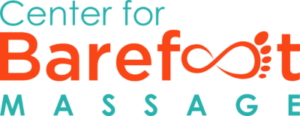I have been an Ashiatsu instructor for almost ten years, and many types of massage therapists have come through my training studio. A few newbies fresh out of school and some seasoned massage therapists that been in the field for several years. But learning ashiatsu can level the playing field when it comes to length of experience for many massage therapists.

Unlike other massage CEUs massage therapists take to when they get out of school, we’re not only learning massage theory; we’re learning to use different TOOLS altogether: the FEET!
I’ve found three things make a great Ashiatsu therapist. Talent, Practice, and Passion. These are the words of a great visionary and architect, Frank Lloyd Wright,
What is talent?
Webster’s definition is “any natural ability or power.” On the first day of initial Ashiatsu training, it usually becomes evident which therapists have the potential to be great at ashiatsu. They have an innate grace and ease of movement in their body and with their feet. Many times, they are or were previously a dancer, gymnast or participated in some movement like martial arts before they became a massage therapist.
A good ashiatsu therapist requires a certain amount of grace when standing on the table and moving around the client. It’s almost like dancing. Each movement or placement of your feet has a purpose. You have to learn to walk around the table as though walking on eggshells, like an Ashi fairy or a ninja…. NOT Big Foot.
By the third day, this is where the potential begins to shine.
By the time the students leave class on the 3rd day, I have at least one workshop client saying their therapist was a “natural”.
Once they leave my studio, my job, for the most part, is done. It’s up to the therapist to follow through with the 20 practice sessions we (Center for Barefoot Massage) recommend you practice on your clients back home.
“Feet on” practice is the only thing that’s going to deepen your knowledge and understanding of the material.
AND increase your palpation skills with your feet. With time, practice and repetition in a variety of circumstances on different body types will genuinely help you gain mastery.
The intuition that you’ve developed with your hands?
You now need to learn to do the same with your feet. To feel different textures and resistance in the muscles and fascia so that you can intuitively use the appropriate pressure and strokes. It all comes with PRACTICE, PRACTICE, and PRACTICE.

With no passion, talent, and practice, you’ll be at best a mediocre ashiatsu therapist. Ashiatsu by no means is the easiest modality to come back from a class and get started. You have figure out a way to build the parallel bars on the ceiling before you can begin.
We have helped tons of therapists figure out the safest and cheapest way to do this, and in class, we prepare students for every scenario possible. You have to pump up your clients, so they are willing and waiting for you to work on them and spread the word about the benefits of Ashiatsu.
Also if you only use ashiatsu occasionally because you’re not comfortable doing it or just when you believe a particular client might like it, you’re not going to be practicing it much. I’ve seen previous students years later, and they don’t practice ashiatsu AT ALL anymore.
Either they failed to follow through putting up their bars, or they never developed a passion for it. It’s NOT as easy as we make it look in class!
THAT’S because we practice it DAILY, pursue advance ashiatsu training, and CONTINUE to evolve our ashiatsu skills. Why? Because we are PASSIONATE about ashiatsu.
Understanding without passion is an effort in futility.
Learning barefoot massage is just the first step–it’s up to you to make it amazing.
{Today’s post has been brought to you by our Durham instructor Julie Marciniak, who is wicked smart and talented (dare I say, “passionate”?) when it comes to massage.}

Please note: we reserve the right to delete comments that are offensive or off-topic.